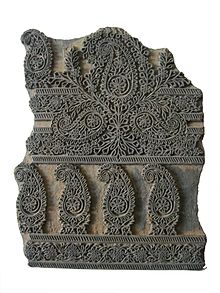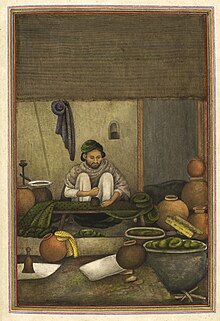|
Chhipi
Chhipi (alternatively called Chhimpa[1]/Chhipa/Chimpa) is a caste of people with ancestral roots tracing back to India. These people are basically Rajputs and used to wear Kshatriya attire.[2] These people were skilled in the art of war, Later people of this caste started doing printing work. They are found in the states of Gujarat, Rajasthan, Madhya Pradesh, Haryana, Delhi, Uttar Pradesh of India. History According to historians, the Chhipa were originally a warrior class or Kshatriya Rajput.[3][4][page needed][5][page needed] They used to have a similar lifestyle like a Rajput in which Physical activities such as hunting, and warfare were involved. It is said that once, according to the Hindu epic Mahabharata, Lord Parshuram While killing all the Kshatriyas to avenge their father, two brothers from the Rajput clan took refuge in a temple.[3][6][page needed] one of the presiding deities hid behind the statue And it got its name from the literal 'hide' for the Hindi verb 'Chhipa'. Later Rajput boy printed cloth Or adopted the profession of dyer and he was not originally a Kshatriya. The genealogy of this Rajput child is the 'Chhipa's of today.[3][7] Present circumstancesIndiaThe community is classified as an OBC caste in the Indian states of Punjab,Haryana, Delhi, Rajasthan, Madhya Pradesh, Uttar Pradesh.[8][9][10][11][12] PakistanChhipa community is settled in Karachi, Sindh, Pakistan.[13] See alsoReferences
External links |
||||||||||||||||||
Portal di Ensiklopedia Dunia
